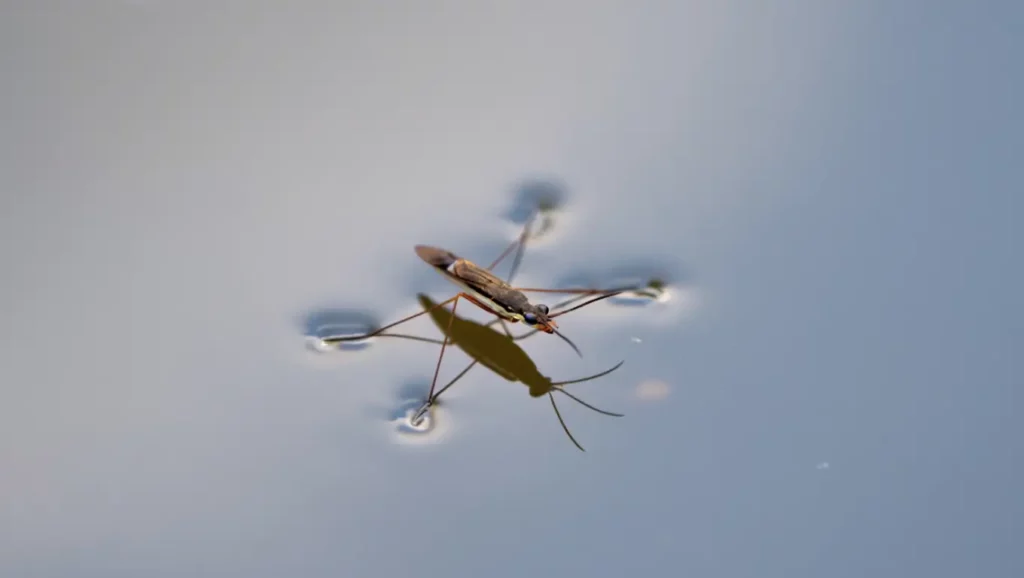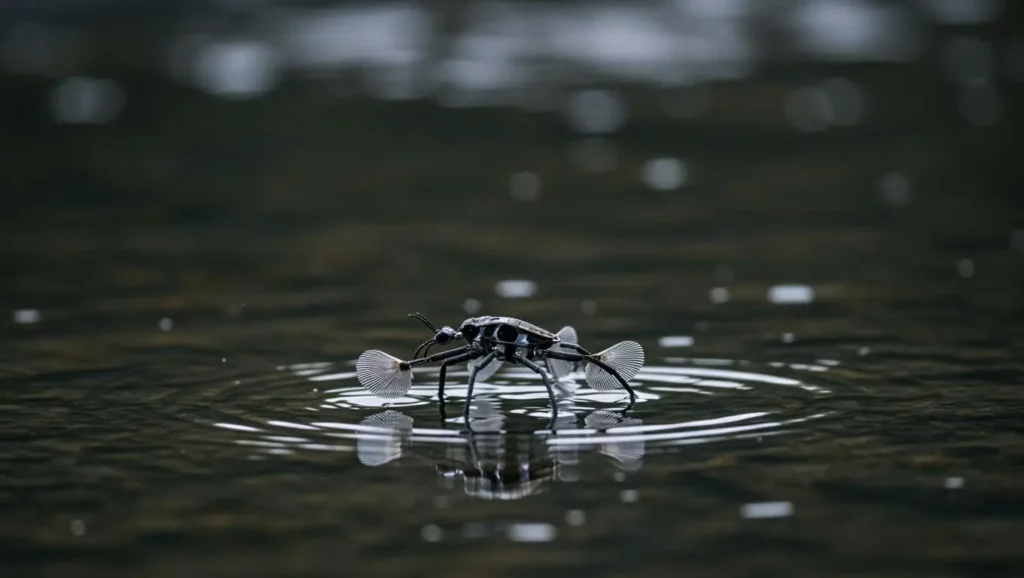Inspired by the locomotion secrets of water striders, researchers have developed a miniature robot called Rhagobot, which can move rapidly on the surface of water. This breakthrough in bio-inspired robotics stems from an astonishing discovery regarding the passive operation of their legs.
A Muscle-Free Locomotion Revealed by the Structure of Water Strider Fins
Scientists recently unlocked the secret behind the ultra-rapid movement of Rhagovelia, a species of water strider. Contrary to previous beliefs, their fins are not powered by muscles. Instead, they operate through a phenomenon known as passive elastocapillary deformation, activated in less than 50 milliseconds.

This advancement, published in the journal Science, results from a collaboration between researchers from the University of California, Berkeley, the Georgia Institute of Technology, and Ajou University in South Korea.
Using a scanning electron microscope, they observed remarkable structures, allowing them to replicate these fins in the form of flat ribbons weighing just one milligram. Since attempts with cylindrical shapes had failed, they chose a design true to nature.
Natural Microstructures Copied to Create an Unprecedented Robot
The team initially attempted to mimic the natural fins using a cylindrical shape, but to no avail.
However, by closely examining the natural geometry, they developed a functional robotic version. The result is striking: fins that deploy automatically, without a motor, solely relying on water tension forces.
“This represents a form of mechanical intelligence integrated and refined by nature over millions of years,” explains Professor Je-sung Koh, co-author of the study.
This mechanism could revolutionize small-scale robotics, even surpassing limitations imposed by the miniaturization of electronic circuits, which are often too bulky for such small structures.
By drawing inspiration from efficient natural solutions, the researchers are overcoming this issue.
Rhagobot: A Biomimetic Robot that is Agile, Fast, and Designed to Explore Moving Rivers
Equipped with these fins, the Rhagobot has demonstrated significantly superior performance compared to other micro-robots as well as some living insects.
It offers enhanced propulsion, more precise braking, and great maneuverability. Laboratory tests show that Rhagobot easily navigates currents where its competitors fail.
This technology could herald a new generation of semi-aquatic robots capable of patrolling river surfaces, even under strong current conditions.
This advancement opens up possibilities in fields such as environmental monitoring, rescue operations, and exploration of inaccessible areas.
A Promising Invention for Future Technologies Inspired by a Tiny Insect
By carefully observing the living world, Rhagobot illustrates that nature remains a powerful source of inspiration. Even today, it offers us innovative technical solutions.
In a context where energy efficiency and miniaturization are crucial, passive mechanisms like this could change the game.
This robot is not just a gadget; it could mark a turning point in the design of tomorrow’s autonomous robots. Positioned at the intersection of biology and technology, Rhagobot paves a new path for innovation.
Ultimately, every insect can become a technological key for the machines of the future.




